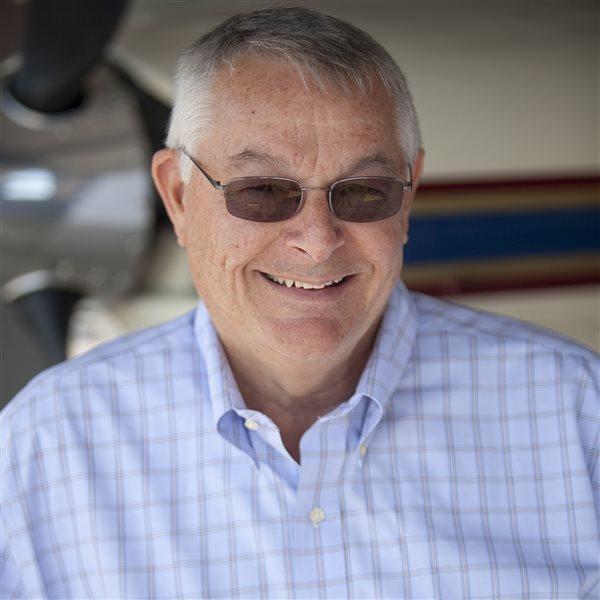History appeared to be repeating itself as Senior Editor Al Marsh prepared the story on Steve Pitcairn's antique aircraft collection (see " Son of a Pioneer," p. 138). Aircraft restorer James Cole ran from the Pitcairn hangar at Trenton-Robbinsville Airport near Philadelphia to tell Pitcairn about an important telephone call. "There's a J. Cierva to talk with Mr. Pitcairn," he said. Harold Pitcairn had exchanged many telegrams with Autogiro inventor Juan de la Cierva in the 1930s. But this time it was the nephew of the famous Spanish inventor calling the son of the famous Philadelphia pioneer to ask if he could bring his daughter to visit. Also sitting in Pitcairn's hangar was George Townson, who logged hundreds of hours of Autogiro time from 1936 though the late 1950s. Townson presented Marsh with a copy of his book, Autogiro: The Story of the Windmill Plane.
AOPA Air Safety Executive Director Bruce Landsberg joined American Airlines Capt. Rob Knapp on the ramp in Cali, Colombia (see " Safety Pilot Landmark Accidents: High-Terrain Tangle," p. 112). Landsberg observed from the flight deck of an American Boeing 757 as it retraced the flight path — almost — of American Flight 965, which struck terrain on the approach into Cali in 1995. Security was so tight at the Colombian airstrip that Landsberg — as a civilian — had to be accompanied by an American Airlines officer at all times.
Executive Editor Mike Collins has done a lot of hangar flying over the years, and in a lot of places — but nowhere, he says, as memorable as on the banks of the Salmon River (see " Postcards: Ah, That River Life," p. 129). Steven Shephard, owner of Salmon River Outfitters, and Collins sat next to a crackling campfire and watched the Idaho twilight fade as they traded the usual pilot stories. The surroundings made those good landings seem even better, and the bad ones — well, they didn't seem so bad.
Before Alex Thurber could take delivery of AOPA's Millennium Mooney sweepstakes airplane, it first had to be ferried to Seattle (see " Surprise of the Millennium," p. 101). For that job, Editor at Large Tom Horne flew N2014U from Springfield, Missouri, on a trip that lasted a total of 15.3 hours. Stops were made at Dalhart, Texas; Sedona, Arizona; Santa Barbara and Livermore, California; and North Bend, Oregon. And at each stop, the Mooney drew small crowds of camera-toting gawkers, all of whom recognized the airplane. Without fail, they would ask, "Did someone here win it?" or, more commonly, "Did I win it?" Horne's smoothest leg was the route to Sedona, flying at 12,000 feet on oxygen, and doing 165 KTAS on 12 gph. The prize for the fastest leg — at a groundspeed of 183 knots and with a smattering of unforecast ice — went to the soggy, solid-IFR trip from North Bend to Seattle's Boeing Field. The letdown came when the Mooney was rolled into seclusion at Galvin Flying Service. "After all that time in the Mooney, I kind of felt that the airplane really ought to be mine somehow," Horne said as he emptied his charts and laundry from Thurber's new airplane.



